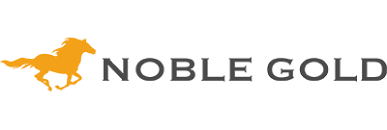Disclosure : The information provided on this website is for educational purposes only. Consult with a financial professional before making any investment decisions. We may be compensated if you use companies, products or services based on our recommendations. Learn more.
Gold IRA Rollover vs. Traditional IRA: Which is Right for You?
Investing for retirement is an important decision, and it’s crucial to understand the various investment options available to ensure your financial future is well-secured. Two popular options for retirement savings are Gold IRAs and Traditional IRAs. Both of these retirement accounts offer significant benefits, but they are distinct in terms of asset management and risk tolerance. In this article, we will compare Gold IRA rollovers and Traditional IRAs, looking at their features, advantages, and considerations to help you determine which is right for your retirement goals.
What is a Traditional IRA?
A Traditional IRA (Individual Retirement Account) is a tax-advantaged retirement savings account that allows individuals to contribute pre-tax income, thus reducing their taxable income for the year in which the contributions are made. The money within a Traditional IRA grows tax-deferred, meaning you won’t pay taxes on your gains until you begin taking distributions during retirement. When you reach the age of 59½ or older, you can start taking money out without penalties, but the withdrawals will be subject to regular income tax.
The primary features of a Traditional IRA are:
- Tax-Deferred Growth: Contributions grow without being taxed until withdrawal.
- Contribution Limits: The IRS imposes annual contribution limits, which are currently $6,500 per year (for those under 50) or $7,500 (for those over 50) in 2025.
- Investment Choices: Traditional IRAs generally offer a broad range of investments such as stocks, bonds, mutual funds, and certificates of deposit (CDs).
- Withdrawals and Taxes: Distributions taken during retirement are taxed as ordinary income, and early withdrawals before age 59½ may be subject to a 10% penalty.
What is a Gold IRA Rollover?
A Gold IRA rollover involves transferring funds from an existing retirement account (such as a 401(k), 403(b), or Traditional IRA) into a self-directed IRA that holds physical gold or other precious metals. The key difference between a traditional IRA and a Gold IRA is the asset allocation – a Gold IRA focuses primarily on precious metals like gold, silver, platinum, and palladium, rather than more conventional investments like stocks and bonds.
Gold IRAs have become popular because gold is seen as a hedge against inflation and economic uncertainty. Historically, gold has retained its value even in times of market downturns, making it a viable option for diversification in your retirement savings.
The key features of a Gold IRA rollover include:
- Self-Directed IRA: A Gold IRA is a self-directed account, meaning you have more control over the specific assets held within the account.
- Physical Precious Metals: Unlike Traditional IRAs, Gold IRAs hold actual physical precious metals such as gold coins, bars, and bullion.
- Tax Advantages: Gold IRAs follow the same tax rules as other retirement accounts, meaning they offer tax-deferred growth, with tax implications upon withdrawal.
- Custodian and Storage Requirements: Gold IRAs must be managed by a custodian that specializes in precious metals and must be stored in an IRS-approved depository for security and compliance.
Key Differences Between a Gold IRA Rollover and a Traditional IRA
While both Gold IRAs and Traditional IRAs offer tax-deferred growth, they differ in terms of the types of investments allowed, the level of risk, and the way the assets are stored. Below, we will look at these differences in more detail.
Investment Type
The most significant difference between a Gold IRA rollover and a Traditional IRA is the investment type. A Traditional IRA allows for a broad range of investments such as stocks, bonds, mutual funds, ETFs, and CDs. This diversity offers investors the opportunity to tailor their portfolio to their specific risk tolerance, investment preferences, and goals.
In contrast, a Gold IRA is restricted to holding physical precious metals, including gold, silver, platinum, and palladium. These assets tend to move independently of the stock market, meaning they offer a different risk-reward profile. Gold and other precious metals can be an attractive investment during periods of inflation or economic downturns, as they often retain their value better than paper assets.
Diversification and Risk Management
Traditional IRAs allow for easy diversification by offering a wide range of asset classes, including stocks, bonds, real estate investments, and cash equivalents. Diversifying your portfolio with different asset types can help mitigate risk, as losses in one area can be offset by gains in another.
A Gold IRA offers a unique form of diversification, particularly for those concerned about the long-term effects of inflation and market instability. Precious metals, especially gold, tend to perform well when the value of paper currency falls. However, because Gold IRAs are restricted to physical metals, they may not offer the same level of overall diversification as a Traditional IRA that includes various asset types. That being said, adding gold to your portfolio can still provide a strong hedge against market volatility.
Liquidity
Liquidity refers to how easily an asset can be converted into cash. Traditional IRAs generally provide high liquidity, as stocks, bonds, and mutual funds can be sold relatively quickly through a brokerage account. Depending on the investment, liquidity can be a key factor if you need to access your funds quickly.
Gold IRAs, on the other hand, involve holding physical gold and other precious metals, which are less liquid compared to stocks and bonds. To access the funds in a Gold IRA, you would typically need to sell the gold through a dealer or broker, which can take time. Additionally, some custodians may have specific rules regarding the sale of precious metals, adding another layer of complexity to accessing your funds.
Storage and Security
Storing gold in a Gold IRA requires the use of an IRS-approved depository, which ensures that the precious metals are kept in a secure and compliant manner. The IRS mandates that individuals cannot store gold in their homes or personal vaults, meaning you will have to rely on a third-party depository for storage.
Traditional IRAs do not have similar storage requirements, as most investments are held electronically through a brokerage. The storage of stocks and bonds is handled digitally, and investors don’t need to worry about physical security.
While physical gold in a Gold IRA may seem like a more secure asset in terms of its tangible nature, the process of storing and managing the physical gold involves additional fees and security considerations.
Fees and Costs
Gold IRAs typically come with higher fees compared to Traditional IRAs. These fees may include:
- Setup Fees: Custodians charge a fee to establish the account.
- Annual Maintenance Fees: Custodians may charge a fee to manage the account.
- Storage Fees: Gold must be stored in an approved depository, which involves storage fees.
- Transaction Fees: When buying or selling precious metals, you may incur transaction fees.
Traditional IRAs, on the other hand, generally have lower fees, especially if the account holder is using a low-cost brokerage for stocks and bonds. While transaction fees may apply to buying or selling securities, they are often lower than the fees associated with purchasing, storing, and selling gold.
Tax Treatment
Both Gold IRAs and Traditional IRAs offer tax-deferred growth, meaning the assets in your account will grow without being taxed until you begin withdrawing funds. When you take distributions from a Gold IRA or Traditional IRA, the withdrawals are taxed as ordinary income.
One of the potential benefits of a Gold IRA is that the value of the gold in your account may increase over time due to inflationary pressures, which can be advantageous during times of economic instability. This can result in substantial gains, but those gains will be taxed when you withdraw the funds.
Which Is Right for You?
The decision between a Gold IRA rollover and a Traditional IRA depends on several factors, including your investment goals, risk tolerance, and preferences. Below are some considerations to help you make an informed decision:
-
Risk Tolerance: If you are looking for a more stable, long-term investment, a Gold IRA may be a good fit. Gold tends to hold its value better than stocks during periods of economic downturn, making it a safe-haven asset. However, it does not generate income like stocks or bonds, so it may not be suitable for those looking for dividend payments or interest income.
-
Diversification: If your goal is to diversify your portfolio across different asset classes, a Traditional IRA may be a better option, as it allows you to invest in a broader array of securities.
-
Market Conditions: If you are concerned about inflation or economic instability, adding gold to your portfolio through a Gold IRA can be a good hedge against those risks. However, it’s important to remember that gold’s value can fluctuate as well, and it may not always outperform other investment options.
-
Liquidity Needs: If you require quick access to your funds, a Traditional IRA may be the more suitable choice due to its higher liquidity. Gold IRAs, being backed by physical gold, may be harder to liquidate quickly.
Conclusion
Both Gold IRAs and Traditional IRAs offer valuable benefits for retirement savings, but they serve different purposes and have distinct features. A Gold IRA rollover may be an attractive option if you’re looking to hedge against inflation or economic instability with precious metals. However, a Traditional IRA provides more investment options, liquidity, and potentially lower fees. Ultimately, the right choice for you will depend on your unique financial goals, risk tolerance, and preferences for asset allocation. It’s often beneficial to consult with a financial advisor to determine which type of retirement account will best suit your needs and help you achieve long-term financial security.
Top Rated Gold IRA Companies

BCA Rating: AAA
BBB Rating: A+
Trustpilot:5.0 Stars
Trustlink: 4.8 Stars
Google Rating: 4.9 Stars
Annual Fee: $200
IRA Process: Min $50,000
Up To 10 Years Zero IRA Fee
Learn More

BCA Rating: AAA
BBB Rating: A+
TrustLink: 5.0 Stars
Trustpilot:4.4 Stars
Google Rating:4.7 Stars
Annual Fee: $200
IRA Process: Min $10,000
Up to $10,000 in Free Precious Metals
Learn More

BCA Rating: AA
BBB Rating: A+
TrustLink: 5.0 Stars
Trustpilot:4.9 Stars
Google rating :4.9 Stars
Annual Fee: $230
IRA Process: Min $20,000
Lowest Fees on Bullion
Learn More

BCA Rating: AA
BBB Rating: A+
TrustLink: 5.0 Stars
Trustpilot:4.7 Stars
Google rating : 4.8 Stars
Annual Fees: $225
IRA Process: Min $10,000
Up to $15,000 in FREE silver
Learn More
The companies listed above are among the top-rated in the industry, offering valuable services for those looking to diversify their retirement portfolios with gold and other precious metals. Be sure to request a free Gold IRA kit or consultation to better understand the process and fees involved before making your final decision.
 Gold IRA Rollover
Gold IRA Rollover